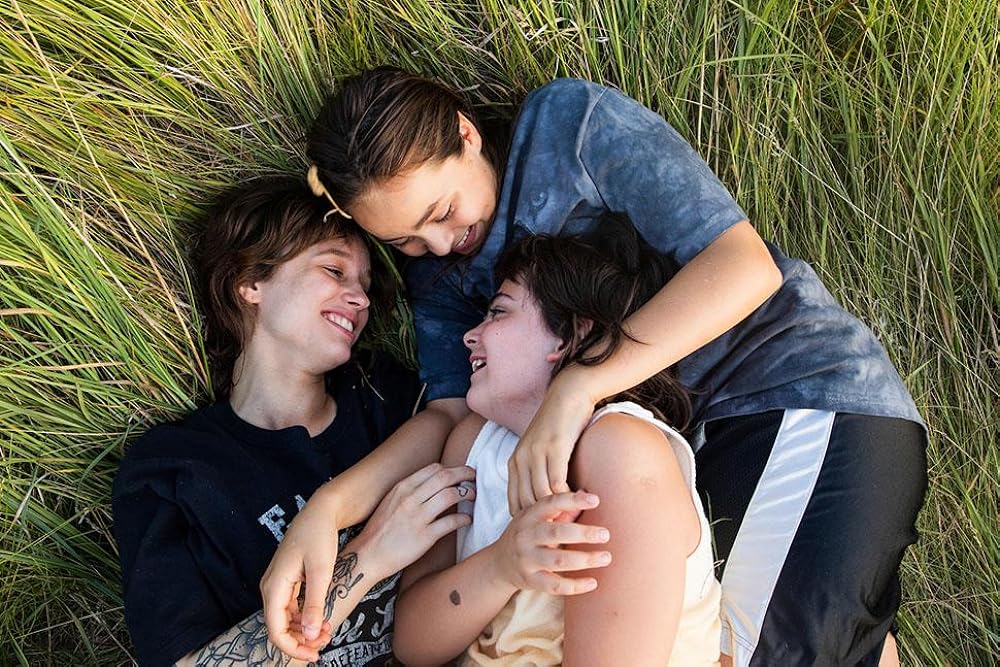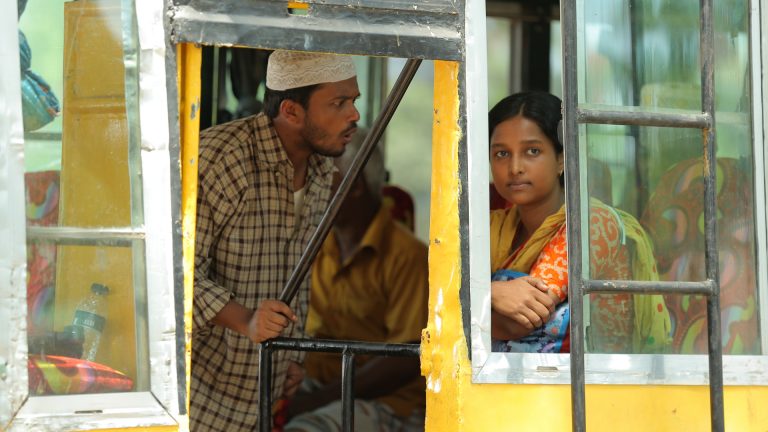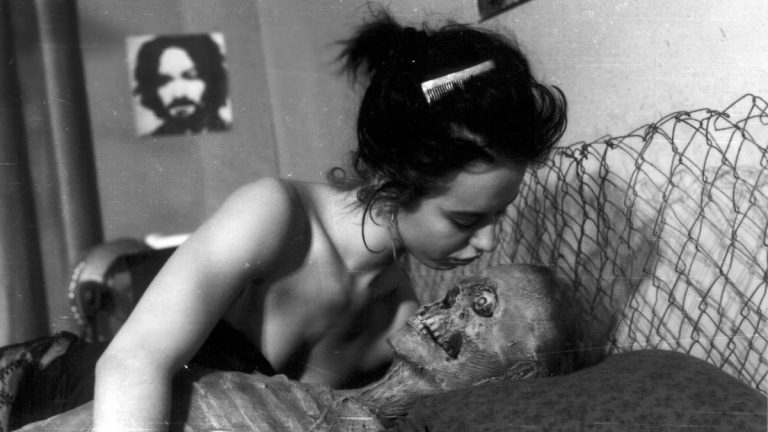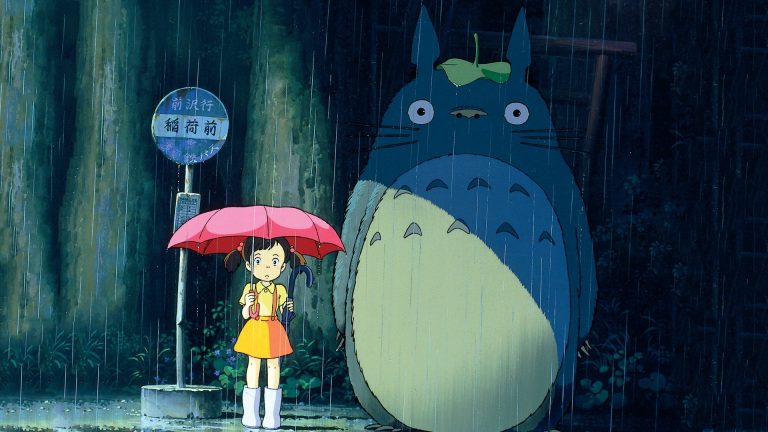Competing in the First Feature Competition at the BFI London Film Festival this year, Paradise is Burning speculates how Home Alone (1990) would play out in summertime Sweden. Here, in the graffitied housing estate nestled between green fields, three siblings live without a parent or guardian in sight.
Naturally, the eldest sister takes on the role of mother: 16-year-old Laura (Bianca Delbravo, in her acting debut). Below her is Mira, her 12-year-old sister (Dilvin Asaad), and Steffi, who’s seven (Safira Mossberg). The three live in boisterous, chaotic harmony, screaming and laughing at each other in equal measure, play-fighting like a couple of schoolboys.
For us adult viewers—and for the most part Laura—there is something heartbreaking in the girl’s lack of supervision. Director Mika Gustafson doesn’t give any context to their parent’s absence. It’s not relevant. We just know the mother hasn’t been seen since Christmas. For Mira and Steffi, however, this freedom is a sort of paradise, not quite old enough to understand that they’ve been abandoned yet and needs are still (mostly) met by Laura.
Their house isn’t the only place that seems to be missing adults. The whole neighborhood—or what we see of it—is populated by kids playing outdoors and breaking into their neighbors’ pools. This is a place where you straighten your hair on ironing boards, steal detergent from the high school washroom, and use your underwear as a tissue when your nose bleeds from a fight. It is a land of messy girls—all scraped knees and cigarettes and skin, scars, second-hand clothes, and skipping school.
Paradise is Burning is a celebration of childhood spirit. Or, more specifically, girlhood. When Mira gets her first period, there’s no shame or embarrassment—no tampons being hurled at her, Carrie (1976) style. Instead, the local kids gather to throw a party, Mira ritualistically growling red wine from her mouth, proud to be a woman, a feisty force to be reckoned with.
Gustafson shows us how being a girl doesn’t necessarily mean soft pink daydreams and hair sprayed into perfection, tied with neat little ribbons. When there’s no discipline—no pointless social etiquette or rules to adhere to—the girls are free to tangle their locks, wear baggy men’s clothing, and eat with their hands. Mouths open, fingers in the peanut butter jar. In some ways, this makes their lifestyle more real. Harder, sure. Less materially abundant. But raw and authentic, belly-flopping down water slides, making memories without a scrap of vanity. They’re more fully in their lives than most of us can say; they take up room and claim the space as theirs. Yet there’s still something wanting in the air. A constant reaching for escapism.

This is most apparent through Laura, who frequently breaks into people’s houses with her new friend Hanna (Ida Engvoll)—one of the few adult characters. The pair don’t steal anything in particular, just smoke their weed and play dress up, trying on other people’s lives, treating strangers’ houses as fitting rooms. Like Marie attending open houses with a fake name in Breaking Bad (2008).
In fact, Laura spends most of the film wandering around empty buildings, picking up random objects, and snooping around bedrooms. She’s a kleptomaniac who distrusts almost everyone, which makes sense given the constant rejection she faces from adults, whether next-door neighbor, mother, or auntie. Her relationship with Hanna is a complex one—a mother, a lover, and a best friend to Laura, all in one—but they both share the burden of looking after kids they don’t wish to, living lives they don’t want. In fact, each sibling has their own little friend outside of each other; Mira is the manager to a shy, middle-aged karaoke singer, and Steffi befriends a same-aged boy playing feral in the woods. There’s a feral quality in all their living, but also a rawness; something to be admired, if not entirely envied.
The chemistry between the three young actresses is dazzling, to say the least, and they each embody their character with an impressive naturalness. Every sibling falls into their societal role: the blissfully ignorant, partially forgotten youngest; the kind but explosive, occasionally jealous middle child; and the overbearingly responsible eldest daughter—a Nordic Fiona from Shameless (2011). Gustafson lets us watch in an observational style, witnessing the beauty and melancholy of the trio’s everyday lives.
Paradise is Burning harbors the tone of realism found in most working-class movies, but rather than bogging us down with the depressing atmosphere we’re used to in council house cinema, Gustafson keeps us on a hopeful, awe-inspiring note. The lighting is always sun-kissed or lampshade cozy; there’s always a joke to be told after a tear. The girls have wet socks from freezer puddles and are sick from defrosted fish sticks for dinner, but they also share beds, dance to the TV, and pour sugar on their breakfast, sweetening the daylight.
Gustafson deposits a level of respect and attention to its young protagonists that’s usually reserved for adults. Like Sean Baker in The Florida Project (2017)—who keeps the camera at a low angle, putting us in the POV of its six-year-old lead—Gustafson inverts the age hierarchy, making the kids’ experience the most important. Note how there are also no boyfriends or crushes around. Just like the blood ritual, this is a girl’s kingdom only. No boys allowed. Sadly, it’s a paradise being threatened by social services, and Laura must find a way to keep them from burning it down.



![Ma [2018]: ‘NYAFF’ Review – A Sumptuously Visualized Horror with a Weak Narrative](https://79468c92.delivery.rocketcdn.me/wp-content/uploads/2019/07/Ma-highonfilms-768x432.jpg)
![Lookback at Hitchcock: Marnie [1964]](https://79468c92.delivery.rocketcdn.me/wp-content/uploads/2020/04/Marnie-1964-highonfilms1-768x418.png)



![Raame Aandalum Raavane Aandalum [2021]: ‘Prime Video’ Review – Political Satire has it’s heart in the right place, but little else](https://79468c92.delivery.rocketcdn.me/wp-content/uploads/2021/09/Raame-Aandalum-Raavane-Aandalum-1-highonfilms-768x432.jpg)